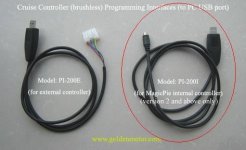Sanity check, for anyone with the time. Will an electric bike work for me?
Scenario: I live near beautiful RMNP. During the summer, I rely on the shuttle buses. They don't run during the winter. I'd like to get to trailheads with most of my energy, but do so in an economical and environmentally friendly manner. Fairly light traffic on the roads, and they're rarely wet, snowy, or icy. Speed limits are generally 25-40 mph on the roads I'd like to traverse. Most have good visibility and good shoulders; nothing above 8% grade, generally 6% or less. I'm 210 lbs. Distance and delta elevation to the best remote trailheads is 11 miles each way, and 1600ft of elevation. Efficiency, brakes and torque are important; speed, less so. The ambient temperature is generally around 30-40 degrees F, but I'd like to use the bike in weather as cold as 10 degrees at times.
This is a very low crime area, but since lots of tourists come through, theft may be an show-stopper. There are no bike racks, but there are plenty of ponderosas. Some of the trailheads have manned ranger stations; others don't.
The bike: I'm looking at a dirt-cheap steel-framed bike as a base. Shocks aren't important since all the roads are high quality and paved, and I don't care about light, fancy components. I want a high-torque, high-efficiency, braindead choice; the Magic Pie II seems like a much-maligned but reasonable one. Power it with an array of LiFePO4 batteries for their cold resistance, maybe 36V/20AH(enough?). I assume gear-driven in the rear wheel is better for the additional torque. Can I mount the batteries on a rear rack, slap on reflectors and a light and call it a ride?
Scenario: I live near beautiful RMNP. During the summer, I rely on the shuttle buses. They don't run during the winter. I'd like to get to trailheads with most of my energy, but do so in an economical and environmentally friendly manner. Fairly light traffic on the roads, and they're rarely wet, snowy, or icy. Speed limits are generally 25-40 mph on the roads I'd like to traverse. Most have good visibility and good shoulders; nothing above 8% grade, generally 6% or less. I'm 210 lbs. Distance and delta elevation to the best remote trailheads is 11 miles each way, and 1600ft of elevation. Efficiency, brakes and torque are important; speed, less so. The ambient temperature is generally around 30-40 degrees F, but I'd like to use the bike in weather as cold as 10 degrees at times.
This is a very low crime area, but since lots of tourists come through, theft may be an show-stopper. There are no bike racks, but there are plenty of ponderosas. Some of the trailheads have manned ranger stations; others don't.
The bike: I'm looking at a dirt-cheap steel-framed bike as a base. Shocks aren't important since all the roads are high quality and paved, and I don't care about light, fancy components. I want a high-torque, high-efficiency, braindead choice; the Magic Pie II seems like a much-maligned but reasonable one. Power it with an array of LiFePO4 batteries for their cold resistance, maybe 36V/20AH(enough?). I assume gear-driven in the rear wheel is better for the additional torque. Can I mount the batteries on a rear rack, slap on reflectors and a light and call it a ride?



